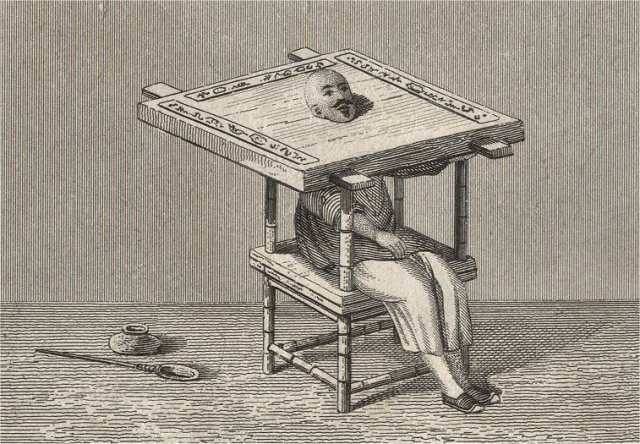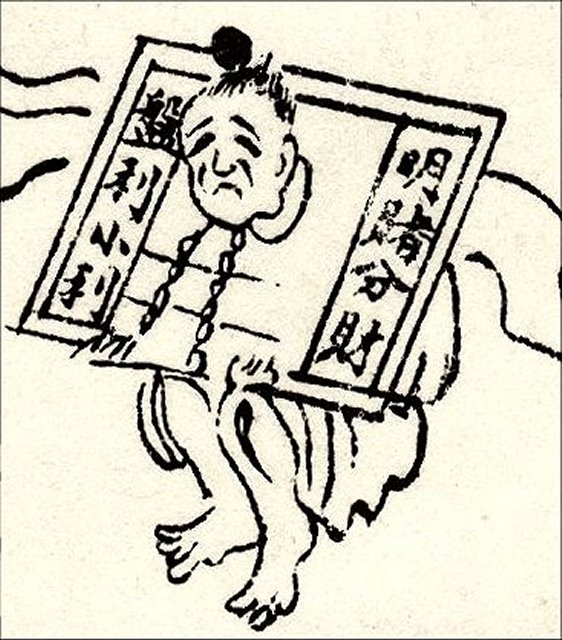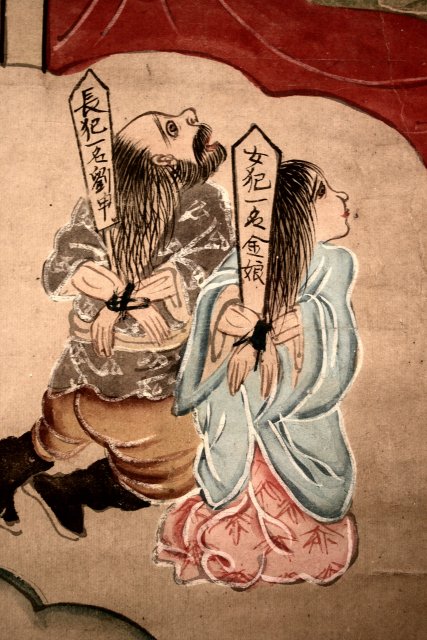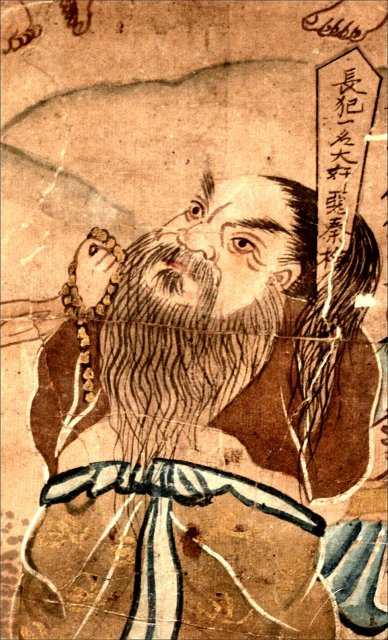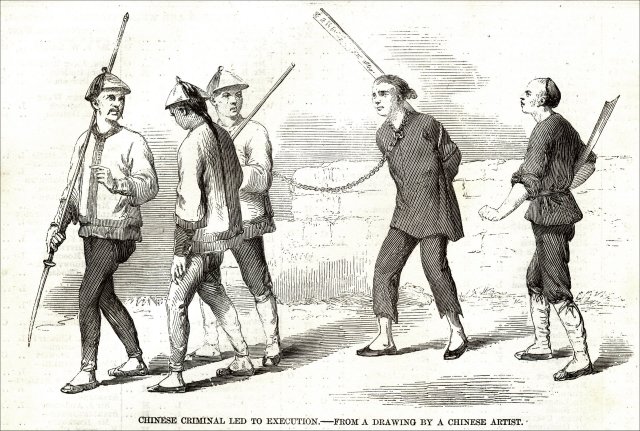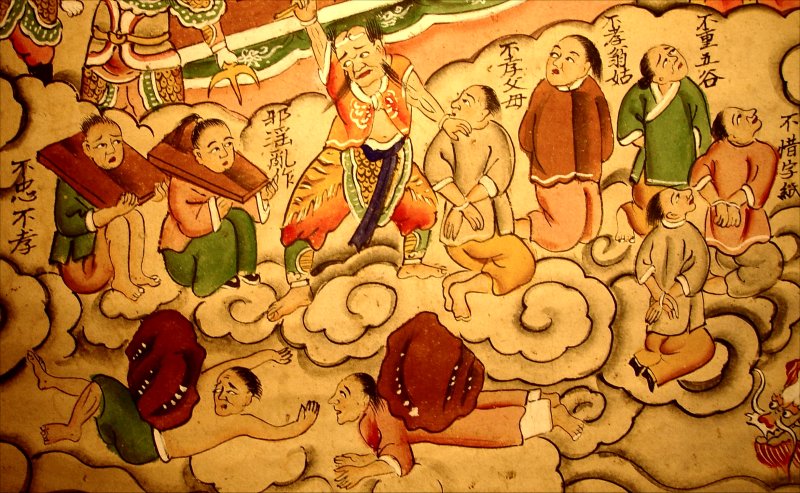
Translations (from right to left)
- Had no concern for paper with written characters on it.
- Wasn’t careful about the five grains.
- Unfilial toward the in-laws.
- Unfilial toward one’s own parents.
- Depraved and chaotic
- Disloyal and unfilial
Here the records are checked, crimes reviewed and punishments assigned. Throughout the hell scrolls, a great deal of emphasis will be given to bureaucratic recordkeeping, and if bad things happen to good people, it can be attributed either to bad behavior in a past life or to bureaucratic mistakes as this system of red tape is not foolproof. The "Transformation text on Mahamaudgalyayana rescuing his mother from the underworld" (a.k.a. "Mulian saves his mother") provides a telling early scene as Mulian encounters a group of aimlessly wandering men and women who were victims of bureaucratic error. As Victor Mair translates their distress:
"It's only because we had the same name and same surname as someone else,
Our names were mixed up with theirs and so we were escorted here;
The interrogation lasted just four or five days,
We were judged 'not guilty' and released to return to our homes.
Long since sent to the grave by our wives and sons,
Our solitary bodies were flung into the wilderness;
On all four sides, there were neither relatives nor companions,
Foxes, wolves, crows, and magpies competed to divide us up.
Our houses fell into disrepair leaving us with no place to take refuge,
We appealed to the King of the Underworld with plaintive voices;
His judgment was that we be released as wandering ghosts with nothing to do,
Having received this supplemental verdict, what more is there to say?
Today, we have already been cut off from the road of births and deaths,
Once the gates of Hades slam shut, they never open again."
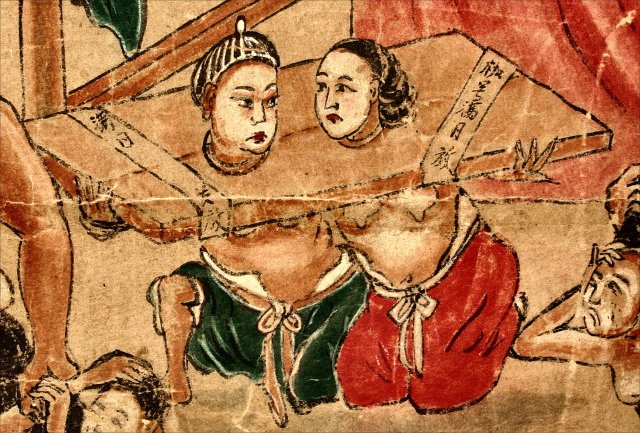
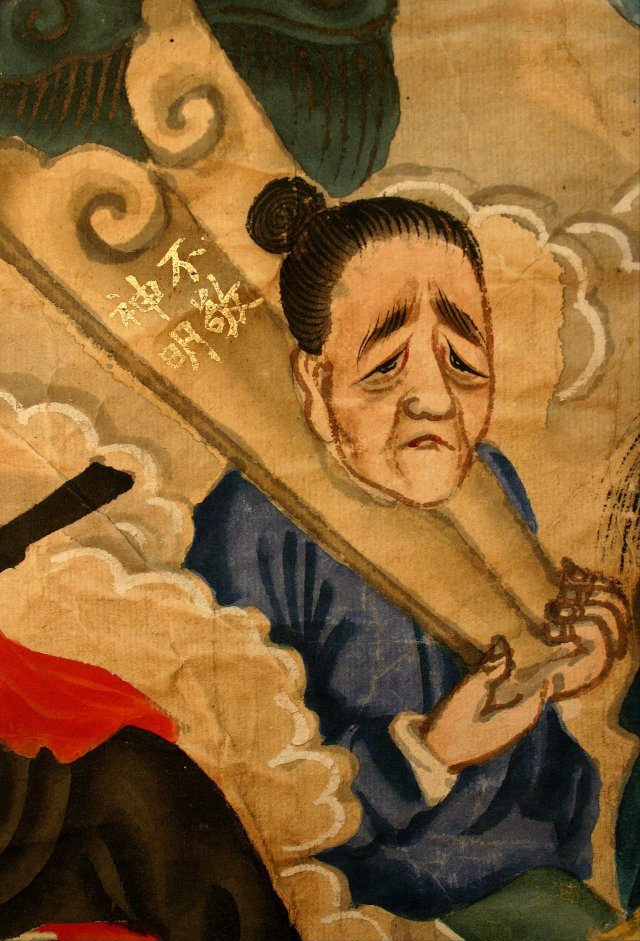
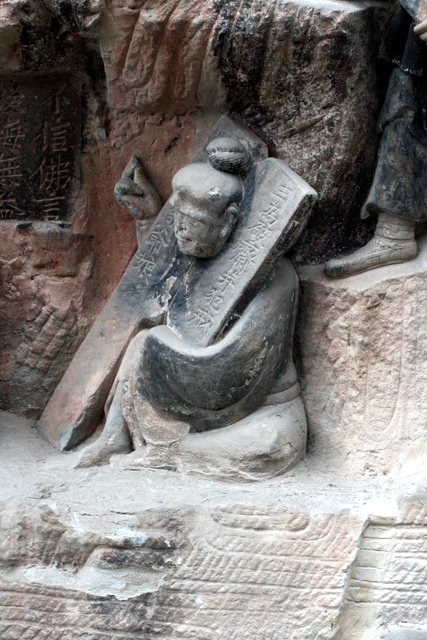
An arrested woman in hell awaiting punishment as depicted at the Dazu Rock Carvings.
